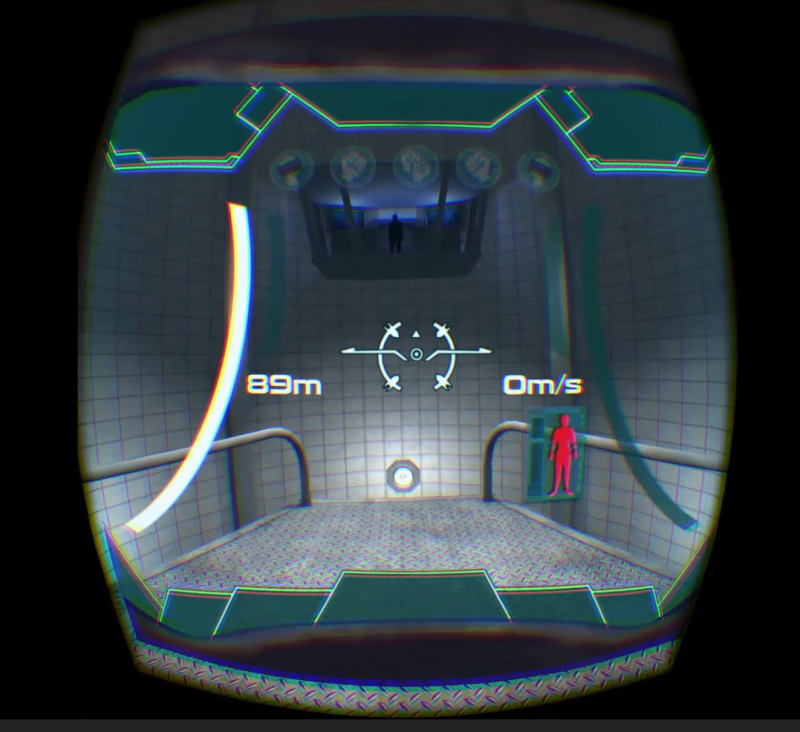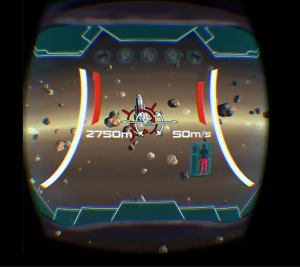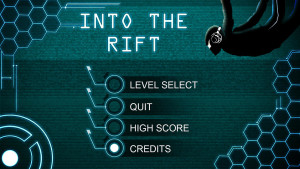Our department’s success relies on faculty ensuring that our course offerings and the experiences of our students reflect the ever evolving nature of game development. One way that we are able to bridge the gap between our students’ academic experience and our personal experience in the industry is by developing courses which provide the unique opportunity to focus on a real-world game technique, challenge, or development process. Virtual Reality [VR] is truly on the cusp of transforming the way we experience interactive media. Though it has a multitude of other applications, recent developments in the technology, including a cost reduction for the production of hardware, has brought it into the realm of consumer entertainment at a rapid pace.
As a game designer and developer particularly focused on both serious games as well as technological advances in gaming, I am excited to make my work with VR accessible to our students. I created a new course focused on virtual reality and augmented reality, and then developed a project based curriculum which would allow for both exploration and practical application. I leant my own pre-production VR hardware to the project in order to initiate rapid development of the course. Thereafter, I researched and drafted the budget and scope for our department’s acquisition of VR and AR hardware which I maintain.
For this particular course, Professor Theinert and I accepted a team of 14 students to work on the production of an experience that had to meet certain criteria which we deemed appropriate for a junior/senior level course and which would also help to introduce the students to an array of challenges faced in the real world of VR development. Our criteria included the integration of the Oculus Rift headset with the Unity 3D game engine. Further, it is important to consider the player input method in VR, as the user cannot see her hands or body. It can be challenging then to rely on current input methods such as a mouse and keyboard, or even a game controller. For this course, I included the goal of implementing an alternative input scheme, and ultimately we chose to use the Microsoft Kinect which is a gesture sensing input device that relies on player motion detection. I felt the integration of two novel pieces of hardware combined with the advanced skills required for 3D development would be a strong basis for a challenging, relevant, and practical project.
With this set of objectives, the actual game story was left to the students, culminating in an open project pitch period after which the winning concept was determined by anonymous voting. Theinert and I felt this was the best approach to ensure a sense of ownership by the students. The outcome was that we would produce “Into the Rift”, a virtual reality free-diving experience in space.
Outcomes: We offer a number of different concentrations within Interactive Media, such as Art, Concept/Level Design, Programming, Audio, and Management. It could be difficult to represent the value of VR, its potential and its specific challenges, to such a wide range of interests, but by creating a project plan, I was able to discuss the theory behind VR, as well as discuss the various unique properties, while actually providing one-to-one relevance for each concentration. The programmers were faced with the tasks of integrating hardware; the designers needed to determine a game concept and relevant level missions that would be effective in a virtual world with body-gesture control; the audio team needed to provide 3D surround sound; while the artists specifically found the challenges of creating a player body that actually moved with the user, to be non-trivial.
As the producer and co-lead with Professor Theinert, of the “Into the Rift” project, I was able to bring my real-world experience of VR production to my students, create a challenging and rewarding course, deliver an exciting interactive experience, and provide the proving grounds for our department’s Game 2.0 curriculum proposal which relies on an industry standard Studio system.
We were invited to demonstrate this project to over 100 attendees at the Boston Venture Cafe due to its unique use of the Oculus Rift and integration with the Kinect. The students were very excited to show their work and see other real-world VR projects, as well as having the opportunity to network with potential employers looking for VR experienced designers and developers.


